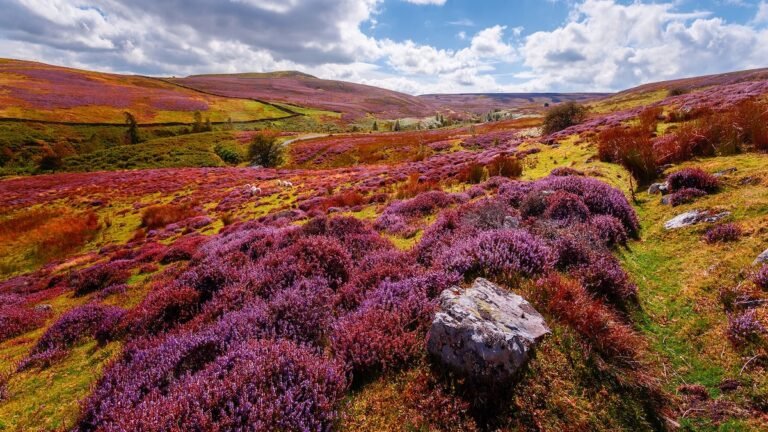This article was produced by National Geographic Traveler (UK).
Museums don’t come much more local than the Muker Literary Institute. The Institute was built in the 1860s as a place for the villagers to educate themselves by reading books and newspapers, and the museum consists of one room and holds items as diverse as trumpets, miners’ boots and tools for casting rams. It neatly embodies the village of Muker itself: small, traditional and shaped by its location in a remote, high-sided valley.
I spent a few hours watching the museum exhibits while the elegiac lines of the brass band recordings filled the room. If you’re here on a Monday night, in fact, you can hear the Muker Silver Band in person, rehearsing upstairs while their cornets and trombones echo through the hills. It is next to the Muker Tea Shop, located a few steps away, which does a life-enhancing cuppa and cake. It was here, I was told, that King Charles bought his gloves from the wool dealer next door.
The Yorkshire Dales are full of villages like this, not least in Swaledale. Despite centuries of scars from the lead mining industry, the valley is a beautiful part of the national park, with dry stone walls falling down woolly slopes and lonely sheep lazing on distant ridges. The River Swale itself riffles across the landscape like a handsome side-act. When Alfred Wainwright designed his now famous Coast to Coast walk between the North Sea and the Irish Sea in the early 1970s, he planned a route that led to Swaledale. He knew good hiking territory when he saw it.
Here I am in the Dales on a hectic journey from village to village, running in a car along single-track roads that roll like silver threads through big green hills, walking when the charm takes me. The contours are all filled in. It is a place to travel slowly and feel small.
Less than three miles from Muker, I found the smaller settlement of Keld. The squat houses are made of rough stone, which shines now after a short rain, and a path from the village leads to a toppling river gorge. High in the hills, I saw the ruins of a large 18th century house, the brilliantly named Crackpot Hall. Returning to Keld, I passed a 30 strong group of primary school children leading the walk. “This is how you march in the hills, see,” said one of his classmates. “Slow and steady, then you won’t get bloated.”
The slopes for miles around are dotted with stone cowsheds, known locally as ‘cow’usses’. They look like small, gray and weathered Monopoly houses dropped into a windy landscape of grassy hills. I passed one engraved with the date 1687. It is said that farmers used to sleep in these huts during the cold winter, taking advantage of the warmth of their animals.
The next day, after a lunchtime detour across the high moors to the Tan Hill Inn – Britain’s highest pub, at 1,732ft above sea level, and a good seller of pies – I drove south into the Wensleydale valley. The route includes the steep but beautiful Buttertubs Pass, which was chosen to test the ability of the riders on the Yorkshire stretch of the 2014 Tour de France. Only a handful of other cars dot the scene, circling distant bends.
In Wensleydale I based myself in Hawes, which is bigger and busier than the Swaledale villages, but still full of character. The main draw here is the cheese-lovers haven of Wensleydale Creamery, where a tidy sum will buy you a souvenir Wallace and Gromit biscuit barrel, but there’s also plenty to enjoy in the surrounding countryside. A 1.5 mile stroll across mellow water meadows – a curlew here, a heron there – brought me to the 13th century Green Dragon pub.
Although the inn sadly closed in 2022 due to cost overruns, walkers still visit for the treat behind it: Hardraw Force – England’s largest single-drop waterfall, with a height of 100ft. I handed over a few coins to enter the forest and soon the sound of running water filled the sycamore grove with white noise. There was no one else around. Kevin Costner filmed here once, bathing naked at the foot of the falls for scenes in the 1991 film Robin Hood: Prince of Thieves. Today, there is a gray wagtail by the water.
Back in Hawes, at the Dales Countryside Museum, I learned that the Romans controlled the Yorkshire Dales for three centuries, building a network of roads and fortifications in the process. It may be hard work, making roads across empty hills, but I think there are worse jobs. Even then, the landscape grows as far back as it does now – and on a good day, there’s no better place to catch your breath and absorb the world around you.
To subscribe to National Geographic Traveler (UK) magazine click here. (Available in selected countries only).
